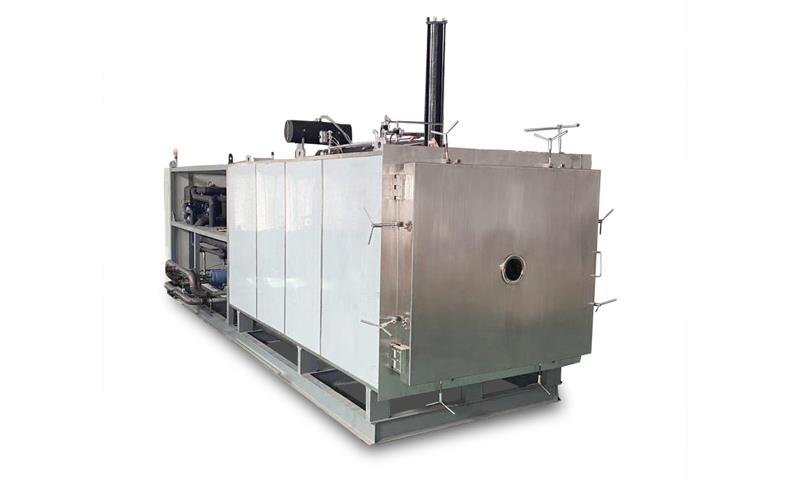In recent years, freeze-drying technology has become a highly sought-after innovation due to its wide applications in the food, pharmaceutical, and biotechnology industries. As freeze-drying machines (Lyophilizers) continue to evolve, market demand is steadily growing, and the industry as a whole is showing strong signs of development.

Over the past few years, the technology behind freeze-drying machines has seen continuous advancements, with trends toward more intelligent, automated, and energy-efficient equipment. Traditional freeze-drying machines relied mainly on thermal energy, but modern machines increasingly utilize more energy-efficient and environmentally friendly technologies. For example, improvements in freeze-drying processes and the introduction of low-temperature control technologies and vacuum systems have significantly increased drying efficiency while reducing operational costs.
Furthermore, the integration of smart technology has made freeze-drying machines more precise and efficient. Devices incorporating the Internet of Things (IoT) and Artificial Intelligence (AI) technologies allow for remote monitoring and operation, enabling real-time detection and adjustment of key parameters during the drying process. This reduces the need for manual intervention and enhances product quality.
Freeze-dried food has seen a sharp increase in demand globally, especially in the nutrition, convenience, and ready-to-eat food sectors. One of the main advantages of freeze-drying is its ability to retain the original nutritional content, color, and flavor of raw materials, making it highly favored by consumers. With the growing popularity of outdoor activities, travel, and emergency food markets, demand for freeze-dried foods has surged.
Particularly during the COVID-19 pandemic, the demand for long shelf-life and convenient food products spiked, leading to an increased interest in freeze-dried foods. Major food companies have heavily invested in freeze-drying technology to develop new products, including freeze-dried fruits, vegetables, meats, and soups, further fueling growth in the freeze-drying equipment market.
Freeze-drying technology is also widely used in the pharmaceutical industry. Freeze-drying machines are employed for drying medications, vaccines, antibiotics, and biological products to ensure their stability and activity. As global demand for vaccines and biological products continues to rise, the market for freeze-drying equipment is also growing.
During the production and distribution of COVID-19 vaccines, freeze-drying technology played a critical role. The freeze-drying process effectively extends the shelf life of vaccines, reduces dependence on cold chain transportation, and provides reliable support for global vaccine distribution. This has led to increased investment in freeze-drying equipment by pharmaceutical companies.
According to a recent market research report, the global freeze-drying machine market is expected to maintain steady growth in the coming years. In particular, the Asian market, with rapidly developing economies in China, India, and other emerging markets, will see significant growth in demand for freeze-drying equipment. China, as one of the largest consumers of freeze-drying technology, is expanding its production capabilities for freeze-dried food and pharmaceutical products, leading to a steady increase in demand for related equipment.
Additionally, as consumers' interest in natural foods and health products grows, the advantages of freeze-drying technology will increasingly be recognized, driving further expansion in the market. Companies in both Europe and Asia are ramping up research and development efforts to enhance the performance and efficiency of freeze-drying machines in order to meet the increasingly diverse needs of the market.
Despite the promising outlook, the freeze-drying machine industry faces certain challenges. On the one hand, the high cost of freeze-drying equipment remains a major barrier to entry for small and medium-sized enterprises. On the other hand, as market competition intensifies, equipment manufacturers must continue investing in innovative technologies and services to maintain a competitive edge.
Additionally, stricter environmental regulations require freeze-drying machine manufacturers to consider energy consumption and waste disposal in their production processes. The continuous advancement of energy-saving and eco-friendly technologies will be key for companies to maintain their market share.
Overall, the freeze-drying machine industry is experiencing rapid growth, driven by both technological innovation and rising market demand. As the technology continues to deepen its application in the food, pharmaceutical, and biotechnology industries, and as trends toward smart, energy-efficient, and environmentally friendly equipment accelerate, the industry is poised for steady expansion. Companies will need to innovate continually in terms of production efficiency, product quality, and market competitiveness in order to meet the evolving demands of the market.
About Us+
Product+
Case+
News+
